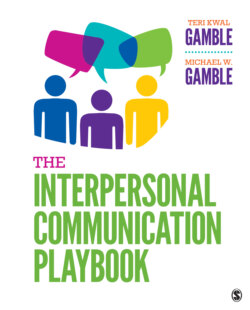Читать книгу The Interpersonal Communication Playbook - Teri Kwal Gamble - Страница 26
На сайте Литреса книга снята с продажи.
Context
ОглавлениеThe environmental and situational or cultural context in which the communication occurs (its setting) can also affect its outcome. The physical setting includes an interaction’s specific location, that is, its appearance and condition. A candlelit exchange may have a different feel and outcome from one held in a busy, brightly lit office. The social setting derives from the status relationships and roles assumed by each party. Some relationships seem friendlier and are less formal than others. The psychological setting includes the interaction’s emotional dimensions. It influences how people feel about and respond to each other. The temporal setting includes not only the time of day an interaction takes place but also the history, if any, that the parties share. Any previous communication experience that you and another person have had will influence the way you treat each other in the present. The cultural context is composed of the beliefs, values, and rules of communication that affect your behavior. If you and the other person are from different cultures, the rules you each follow may confuse the other or lead to missing chances for effective and meaningful exchanges. Sometimes the context is so obvious or intrusive that it exerts great control over our interaction by restricting or dominating how we relate to one another; other times it seems so natural that we virtually ignore it.
